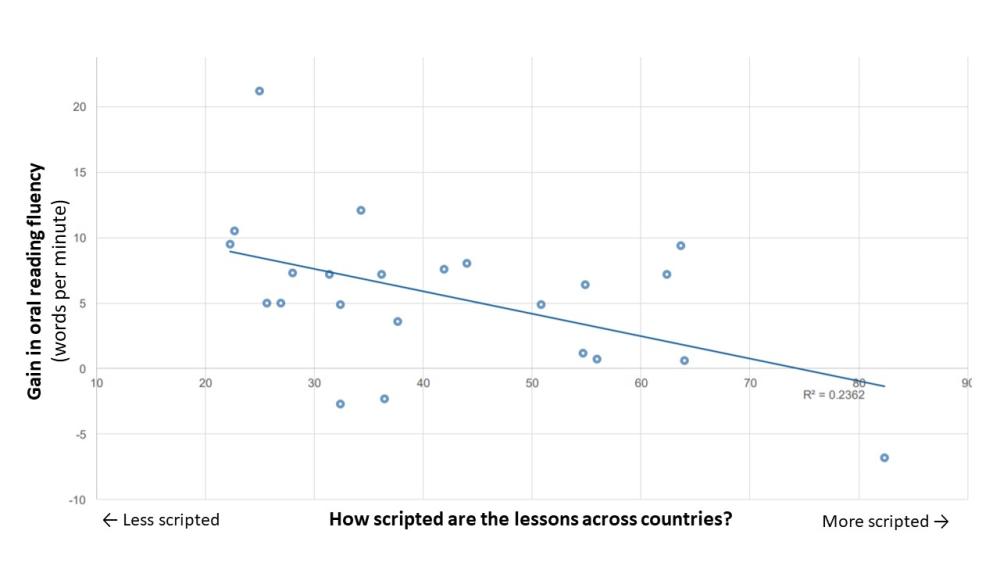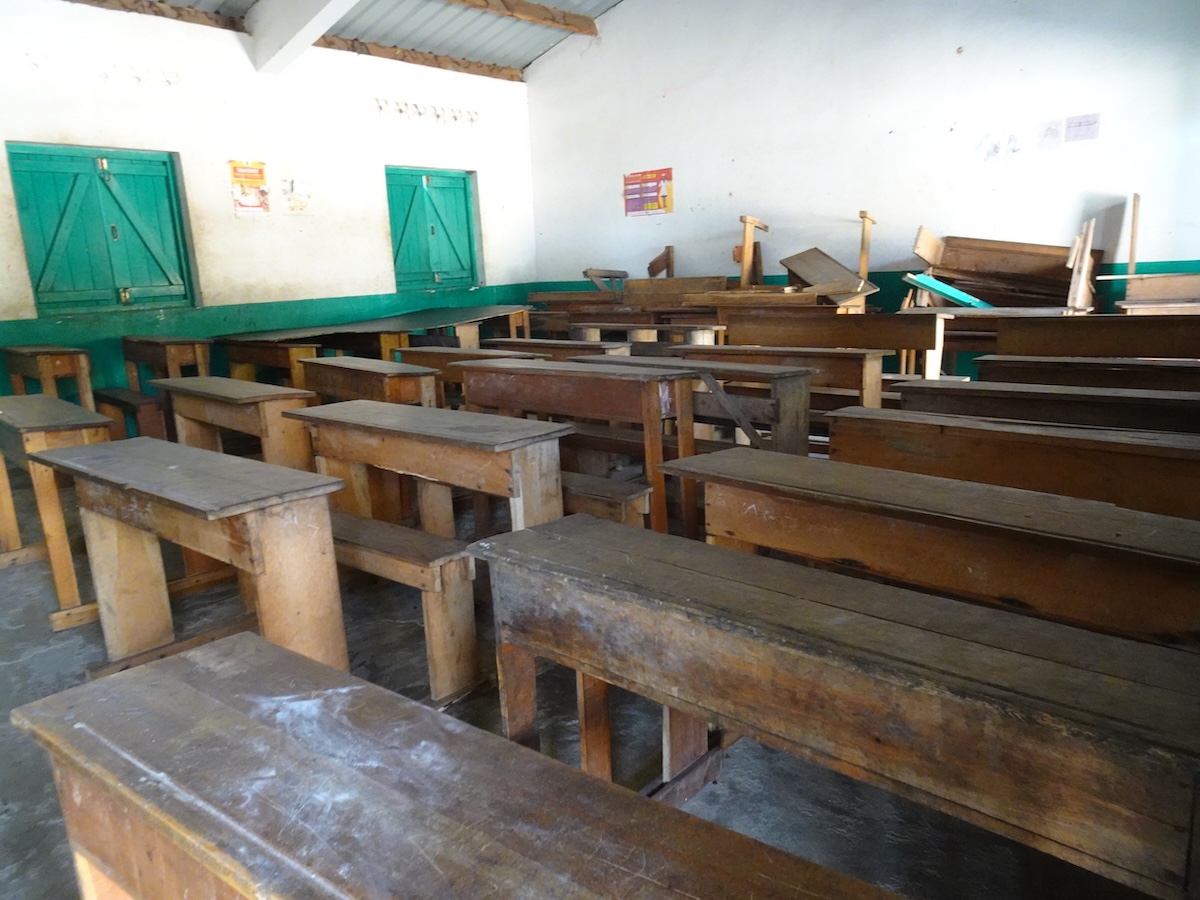It is difficult to imagine an effective teacher who does not have mastery of the content nor command of the pedagogical skills needed to teach literacy. Yet many teachers, particularly in low- and middle-income countries, lack these very skills. In those same countries, students exit school without the essential capabilities they need. How can we help teachers to teach more effectively?
One potential solution is to provide teachers with detailed teachers’ guides that contain plans for each lesson. A recent meta-analysis of the impact of “direct instruction” programs in high-income countries, which provide “highly structured guidance to teachers in the wording, sequencing, and review of material presented to students,” shows positive, significant effects for both math and language-learning. Several recent successful programs to boost literacy—in Kenya, Liberia, Malawi, Uganda, and elsewhere, for example—have incorporated teachers’ guides. Teachers’ guides do not mean stripping teachers of their agency, but rather providing them with tools so that they can build on the skills they have to give students the learning they deserve.
Across 13 countries, programs that incorporated teachers’ guides significantly increased student learning. A recent analysis provides guidance on how to make teachers’ guides as effective as possible (see box below). But what kind of guides help the most? If you compare how detailed the script was across the guides in the 13 countries, you find that the guides that yielded the largest gains in student learning provided some detail for the teachers but not a word-for-word script (see figure below). Likewise, most programs that revised their guides over time shortened their lessons. Classroom observations across countries showed teachers adapt the lessons to make them their own, but that with better designed guides, teachers were more likely to make positive modifications that enhanced the quality of the lessons.
Teachers’ guides—in combination with other reforms—are a powerful tool to help teachers deliver the best content to students with effective pedagogies.
“Structured teachers' guides improve learning outcomes, but … overly scripted teachers' guides are somewhat less effective than simplified teachers' guides that give specific guidance to the teacher but are not written word for word for each lesson in the guide.” (quote from Piper, Sitabkhan, Mejía, and Betts)
Box. Ten tips to improve the content and design of teachers’ guides
|
Content and instruction
|
Design and formatting
|
|
Use a consistent instructional method through all the lessons, to create structure and positive routines for teachers and students.
|
Limit the length of each lesson: a 30-45 minute lesson would be only two pages long for lessons early in the guide and one page long for later lessons.
|
|
Have a lesson plan for every day.
|
List goals for each lesson.
|
|
Provide more scripting in early lessons and less in later lessons, as teachers learn the methods.
|
Include a legible image of the relevant page from the student book in the teacher guide, so teachers don’t have to flip back and forth between books.
|
|
Limit the number of activities per lesson so that all critical activities can happen. No more than 5-7 activities for a 30-45 minute lesson.
|
Make the guides lightweight so teachers can use them easily and strongly bound so they do not fall apart.
|
|
Include informal assessments of understanding in every lesson.
|
|
|
Guide teachers to differentiate instruction based on student needs.
|
|
Source: Reproduced with minor adaptation from Piper, Sitabkhan, Mejía, and Betts (2018). Find more specific guidance and more details in that report.
Figure. Teachers’ guides make a difference, but simpler guides—with less detailed scripts—are associated with larger gains.
Source: Reproduced with minor adaptation from Mejía, Sitabkhan, and Piper (2018).
CGD blog posts reflect the views of the authors, drawing on prior research and experience in their areas of expertise.
CGD is a nonpartisan, independent organization and does not take institutional positions.






